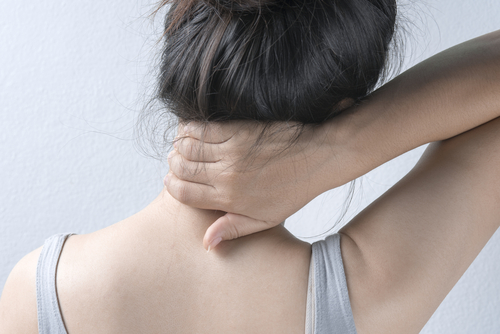Study Examines How Pain Intensity, Location Affect Disabled Youth

Chronic pain is a significant health issue among youth with physical disabilities, but has been studied less than it has been in adults. Now, researchers have found that various aspects of young people’s daily lives can be affected by both the intensity and location of the pain in their bodies.
The findings reported in a study titled “Pain extent and function in youth with physical disabilities,” were published in the Journal of Pain Research.
Pain is assessed on different aspects, including: Intensity, body location, constant versus intermittent, and type (e.g. hot, electrical). These pain characteristics influence the daily life of patients.
In this study, 115 participants aged between 8-21 years who had been diagnosed with a physical disability (including cerebral palsy, neuromuscular disease, spinal cord injury, spina bifida, or limb deficiency) were asked to report pain location and intensity. They also described how pain affected their social and working activities, and general well-being. The majority of the participants were white/caucasian (68%) and males (56%).
Researchers found that 91% of the participants experienced pain at more than one body site “This finding of high rates of multi-sited pain may be due to the fact that having pain in certain areas increases the likelihood of having pain in some other places,” authors wrote in the report.
The team found that pain intensity in the back interfered more with mobility, self-care (of daily needs), and leisure, social or school activities. Because muscles in the back are involved in most of the body’s actions, this result was expected.
Interestingly, pain intensity in the shoulders was associated more closely with a decrease in overall mental health.
“It is difficult to identify a reason as to why pain intensity in the shoulders may be more closely associated with lower psychological function than pain at other sites, for example. Future studies are needed to determine which of the current findings related to specific sites replicate before identifying the potential reasons for the associations found,” the authors wrote.
Participants who experienced pain in the bottom or hips had more disability and more problems engaging in regular activities, the study found.
Despite the study’s limitations, such as including different diagnoses and a low number of participants for each diagnostic, it strengthens the benefits of targeting pain at specific sites in youth with disabilities.
“The findings support the need to take into account pain extent in the assessment and treatment of youths with physical disabilities and chronic pain, call our attention about the need to identify potential risk factors of pain extent, and develop and evaluate the benefits of treatments that could reduce pain extent and target pain at specific sites.” the team concluded.


